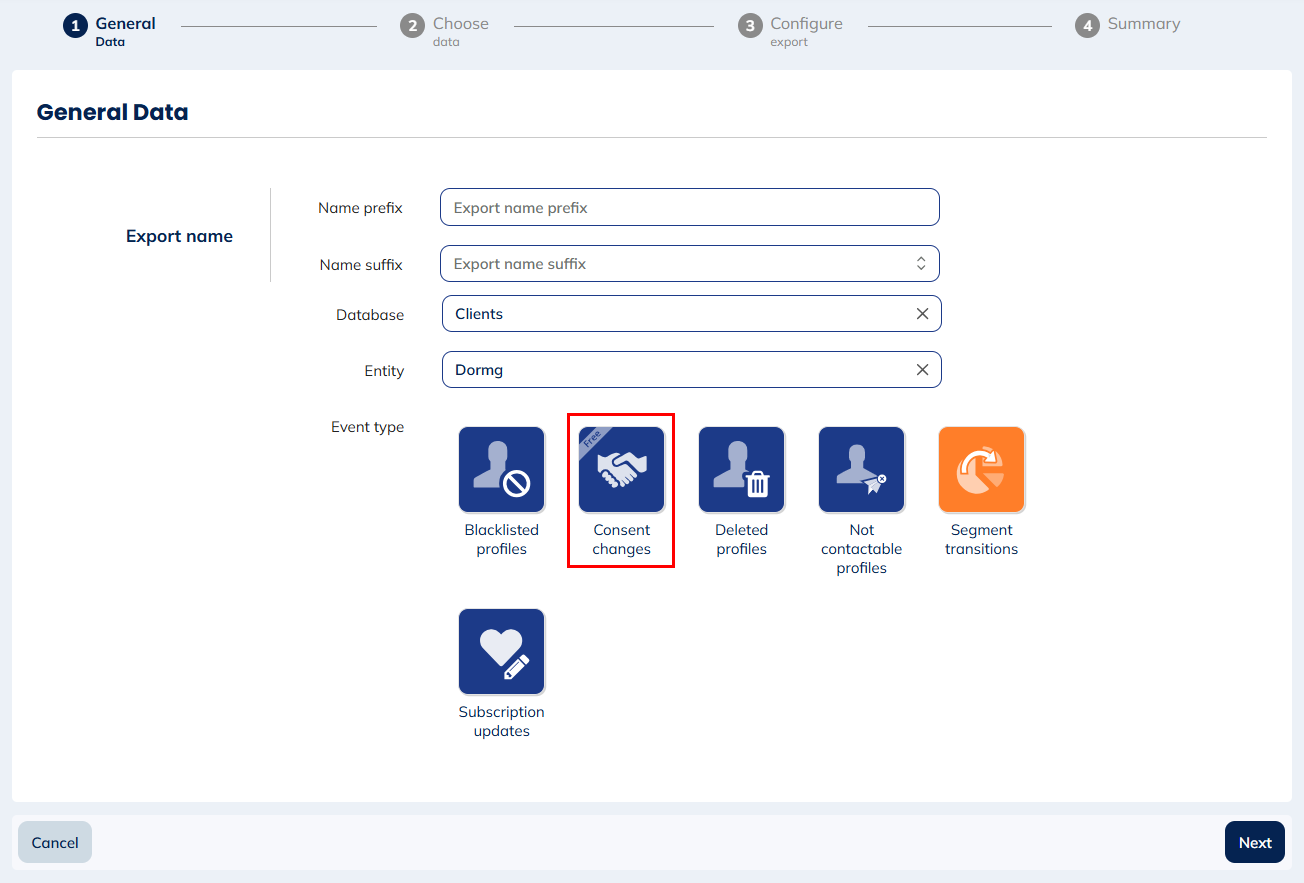Managing the Tracking Consent
Privacy protection laws are interpreted more and more strictly, and some web players even take their own initiatives to go further (for example, Apple's "Mail Privacy Protection").
In the United Kingdom for instance, the Privacy and Electronic Communications Regulation (PECR) states that consent is required to place or read information on the device of a profile.
Therefore, Actito offers its users to give the possibility to the profiles, from their database, to choose if they consent their behavior be tracked for marketing purposes.
To do so, Actito allows to manage the "tracking consent", which defines whether the behavior of a profile following a campaign can be tracked (for example: recording the opening or a click in a campaign).
Understanding the tracking consent
The tracking consent is broadly defined as the consent to track the behavior of a profile for marketing purposes.
Practically, the tracking consent regulates the following actions:
- recording the opening of an e-mail
- recording a click in an e-mail
- recording the device and the user-agent used by the profile
- recording a click in an SMS message
- recording a website visit or transaction goal
None of the above actions will be stored in the interactions of a profile who refused to give their tracking consent
Through its mechanics, the tracking consent resembles the marketing consent (marketingConsent attribute), which regulates the consent given by a profile to be contacted by marketing communications.
However, a profile could very well accept to receive communications, but not that their behavior following these communications be stored and used to influence the future messages they will receive.
These 2 concepts are in fact complementary.
Set up the tracking consent
The choice of consent given by your profiles, whether positive or negative, is stored in your profile table thanks to the pre-defined "trackingConsent" attribute (if you have added the tracking consent attribute when creating your profile table).
Applying the consent
In practice, applying a negative tracking consent will have an impact on reporting and profile interactions.
Reporting
If a profile does not consent to have their behavior tracked, none of the actions listed before will appear in the reporting.
No trace of this action will be stored, even not anonymously, and therefore the stats of the campaign will appear as if the action from the profile did not occur at all.
Similarly, no transactional goal will be attached to the campaign, nor will it appear in the Revenue module.
Profile interactions
If a profile does not consent to tracking their behavior, none of the previous interactions will appear in their profile interactions.
Which means:
- this interaction will not be included in the exports of the events of a campaign
- this profile cannot be targeted for this interaction (indeed, a profile with negative consent will always be considered as "non-opener" of a campaign in a targeting)
- no scenario can be triggered by this interaction. Similarly, a wait block "opening" or "click in an e-mail" will always put a profile with negative consent in the exit branch, because the action will not be recorded.
In addition, the profile technical attributes "lastDevice" and "lastUseragent" will no longer be updated.
A negative tracking consent means that the interaction is not stored. From a practical point of view, the technical means developed by Actito to collect the information (such as the tracking pixel or the links redirection) remain in the e-mail campaigns. But any ensuing interaction will not be recorded nor stored in the license.
Viewing the tracking consent
The collected consent is stored in the profile, under the "Interactions" tab.
The action of removing one's consent will impact future interactions, which will not be recorded, but does not delete the opening, clicks, etc information collected previously, when the consent was positive. Historical data therefore remain available.
The update of the tracking consent of a profile can exported through the module Exports, thanks to the incremental export on "Profile changes" with the type "Consent changes" (which contains both the acceptation and refusal of marketing consent and tracking consent).

Obtaining the consent of a profile
The consent (or non-consent) of a profile can be gathered upstream in your system and fed into Actito via import, synchronization or API call.
It can also be collected directly via Actito forms:
- By creating a collection form, and link it to an (e-mail or SMS) campaign.
- By create a preference center, to be used as scenario to unsubscribe an e-mail campaign.
For more information about the creation of those forms, please refer to "subscriptions".